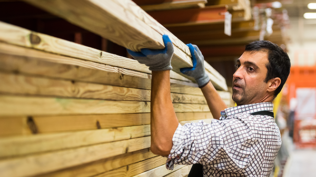Growing up, I loved reading the tale of “The Three Little Pigs,” never thinking much of how the story – credited to James Halliwell-Phillipps in the late 1800s – could ever relate to my adult life. As an occupational hazard, I often think now of the second little pig: “How is he going to rebuild his house of sticks that the wolf blew down?”
In the real world, reconstructing a home after a loss does require a lot of “sticks,” or lumber, and recently the price has risen to concerning levels.
RISING LUMBER PRICES
2020 saw a steep increase in the price of lumber, according to the Bureau of Labor Statistics. The cost of construction materials has risen as much as 330% in the one-, five- and 10-year periods, depending on the commodity. It makes me wonder if that little pig would have had enough insurance coverage to rebuild his stick house.
This has been a surreal time for lumber costs, with COVID shutdowns, labor shortages, tariffs, renovation and building demands all playing a part. People are home more often, looking at how they can make their dining room-turned-home office a more utilitarian and aesthetically pleasing place to spend 8 hours a day.
Reconstructing a home demolished by a total loss currently can take between 6 and 18 months, adding more uncertainty to the equation. More common partial losses are also impacted by the rising lumber costs on a smaller scale, as they do not require as much lumber and are not as time-sensitive.
FUTURE MARKET
While this increase in lumber costs will likely carry into 2022, when reconstruction costs are expected to see another 7-8% increase, the costs are expected to peak and start leveling out. As more lumber mills reopen for use, supply will catch up with demand, and costs should begin to steady.
Until then, the little pig will have to rely on his insurance agent and insurance company to be certain he has enough coverage on his home. You never know when the big bad wolf will come back and blow his house down.

